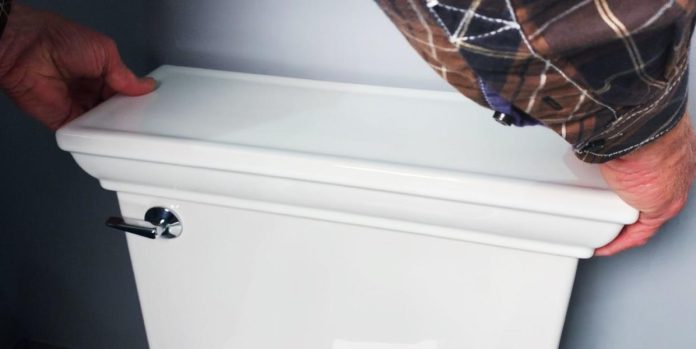How do I fix a leaking toilet without the professionals?Chip Wade/Wade Works
“Hearst Magazines and Yahoo may earn commissions or revenue for some articles through these links.”
Unfortunately, you cannot avoid a running toilet. Although it may seem like a loud noise that you can get used to over time, if left unchecked it can cause a major leak or flooding that will require major plumbing repairs. Also, according to the United States Geological Survey, your running toilet wastes water every day: 22 gallons of water per day and up to 8,000 gallons in a year. Fixing a leaking toilet is one of those things – if you put your mind to it, you can do it all on your own (without professional help). Before you begin, read the expert advice we received from Louis Malvasi, owner of Lane Mechanical Plumbing, Heating, and Cooling Inc. It’s a step-by-step guide on how to fix a leaking toilet yourself.
Here’s everything you need to know about repairing a leaking toilet.
is my toilet working
It’s pretty easy to find out if you have a running toilet – you’ll hear it. If your toilet sounds like it’s constantly flushing, it’s running. It also means you might have a leak, so you need to fix it right away.
What tools do I need?
You need to assemble a tool kit to fix your toilet. This project should take about 30 minutes. But remember, don’t rush and don’t forget to turn off the water valve before getting too deep into the project.
materials
Step One: Remove the toilet lid
First, start by removing the toilet seat at the back of the toilet. Although you probably thought of this as more like a small shelf for placing plants or tissues, this is where all the mechanical parts that keep your toilet running smoothly are located.
Step Two: Check the purge valve and flapper
“You check and see if the flush valve is running,” said Louis Malvasi, owner of Lane Mechanical Plumbing, Heating, and Cooling Inc. The flush valve is in the center of the tank and encompasses the overflow pipe. The baffle (sometimes a rubber ball) covers the hole when the tank is full.
“Then see if the flapper section lets water through,” Malvasi continued. “That’s the part that goes up and down when flushing. If that’s the problem, which is usually the case, replace the inflator and flapper.”
Basically you will see that the water from the rear tank is dumped into the bowl without being flushed.
Step 3: How to repair the inflation valve
When it comes to flush valve repair, there are two common problems that you can easily fix yourself. The first possibility is that the purge valve needs adjustment. Using your Phillips screwdriver, turn the screw on the side of the valve counter-clockwise to lower the float bowl and lower the overflow tube water level.
Step 4: How to replace the inflation valve
If that doesn’t solve the problem, “then you’ll have to install a new one,” explains Malvasi. “You must remove the filler from the bottom of the tank.”
Start by turning off the water. There is a water valve behind your toilet that is connected to the wall and you have to turn the knob to the off position.
Next, flush the toilet (with the top lid still open) to remove as much excess water as possible. Then use a vacuum or sponge to empty the inside of the toilet. Place a bowl under the existing flush valve on the wall to catch any spilled water.
Then look for the supply nut. It’s under the toilet’s tank – unscrew it with your adjustable pliers. Remove the filler tube and retaining nut by turning your pliers counterclockwise. Now safely remove the entire filling container from inside the toilet.
Now you can install the new flush valve inside the toilet and reconnect the flush valve to the supply line in the wall. Get Home Depot’s full video tutorial here.
Step 5: How to Replace the Flappers
To replace the flapper you must turn off the water, which you already did in step four (don’t turn on the water until this entire process is complete). “The flapper comes in different sizes, so you need to find the right size and fit it to the flapper part of the inflation valve,” advises Malvasi.
Next, remove the flap from the inside of the toilet. It has a rubbery texture and can slip off the two plastic nubs it’s attached to. You will also need to remove the old chain attached to the flapper.
Then install the new flapper by attaching it to the two plastic studs and connecting the chain to the flush handle lever. And make sure the flapper stays down and covers the hole.
Now you can see if all your hard work paid off. Turn on the water valve, flush the toilet and put the toilet seat back on. And voila! You fixed it all by yourself.
Follow House Beautiful on Instagram.
You might like it too
Originally published Mar 24, 2023 1:01 p.m
www.aol.com
https://www.aol.com/lifestyle/fix-running-toilet-zero-plumbing-211300387.html














